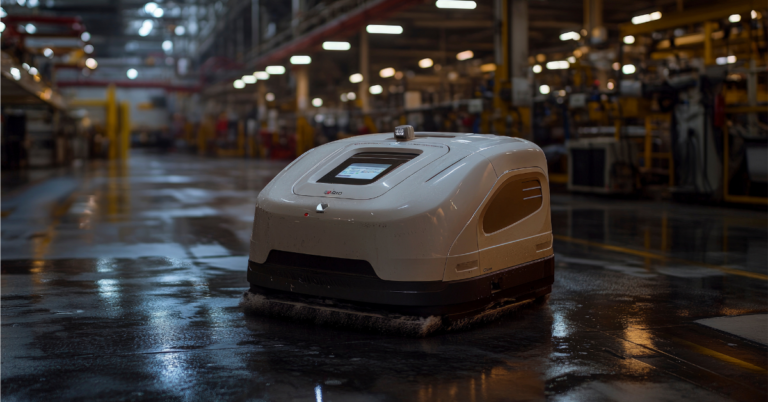When it comes to robotics at scale within large enterprise companies, it can feel as if there is a new challenge coming around every corner.
For many large enterprises, automation is still ramping up and working through testing stages, meaning planning for the future is top priority. It always gives the opportunity to predict certain issues that may occur operating robotics at scale so that they can be met with a comprehensive plan.
Operating larger fleets can present an entirely new set of obstacles than are faced by mid-market companies that utilize smaller fleets. From a higher standard of security to compliance, scalability, and customization, operations must proceed at a higher level of efficiency, despite these challenges, from start to finish of each task.
But how can enterprises expect to run fleets smoothly when so many needs each present an issue?
Although growing pains are expected when scaling and operating larger fleets of robots, navigating them does not have to be so difficult that it delays productivity. Solutions do exist to help ease the impact on operations and help operators invest more in the success of their robots. Let’s take a look at some of the most common challenges enterprises face with robotics at scale.
Deployment Restrictions
At large companies, security and compliance often dictate which tools teams can use, with cloud-based software being especially tricky.
An air-gapped facility, such as a nuclear power plant, requires that software be deployed locally. Similarly, a hospital might have specific requirements around where data resides in order to be HIPPA compliant, something that can pose a change for connected robotic fleets.
The need for higher security isn’t the only reason the cloud doesn’t meet an enterprise’s data needs: gaps in connectivity and lack of bandwidth also rule out the cloud as a viable option.
The solution? Local deployments. By running a platform like Formant on a self-hosted server, enterprises have the ability to store data from whichever location robots are working in.
To help companies bring their entire infrastructure directly onto a local server, Formant offers on-premise deployment. This feature provides all of our core functionality with additional benefits including the ability to comply with data requirements, use the platform on a private network with limited or no connectivity, and data flexibility.
User Permissions and Roles
Just as enterprises work with larger fleets of robots, their number of employees also tends to be larger, with large teams working with the same fleet. Add in the possibility of customers utilizing devices as end-users, and enterprises clearly require more options for roles on their operations infrastructure in addition to the typical “viewer” and “operator”.
Like mentioned above, enterprises can often have higher security needs that also affect the user process. Some may require single-sign-on (SSO), while others might require the ability to set granular permissions to comply with company policy.
To address the need for multiple roles with different security permissions, Formant offers Identity Access Management (IAM) that enforces rules based on groups and individual parameters.
By allowing enterprise teams to create as many roles with different permissions as they need, both internal teams and customers have increased flexibility in the types of roles they add over time.
Data Flexibility
Robotic devices generate an enormous amount of data that can be used for root cause analysis, speeding time to deployment, and performance optimization. This data is one of the most important assets for any robotic fleet, therefore enterprises need to ensure it’s being stored properly to be used however the team needs it.
Most enterprises have their own set of tools for manipulating and analyzing data, but challenges arise when disparate tools aren’t connected, creating data silos and manual work just to get value out of the data that is collected. By limiting where they can manipulate data, the enterprise may not be able to move nearly as efficiently or quickly as they need to.
To aid this, Formant’s platform allows companies to export data seamlessly to any tool they utilize, including Tableau, Jupyter Notebooks, Google Data Studio, Snowflake, and Grafana, to name a few.
Customizability
No enterprise is alike and each company will have unique needs that won’t entirely be suited by every software, out of the box. For example, a company using robots for inspection will obviously have different needs than one focused primarily on warehouse automation. Even within the inspection use case, specific data and operational requirements can vary depending on the asset a company is inspecting.
With software being such a critical component for robotics companies, enterprise teams need a better solution that allows them to customize applications quickly to launch robotics at scale with little obstacles.
Formant is at the forefront of customizability within software platforms. By giving teams the APIs and toolkits they need to build on top of our platform, they can overcome issues faster than ever with none of the typical hurdles that come with building a cloud application from scratch.
Key Takeaway
Operating and scaling robotic fleets at the enterprise level doesn’t need to be difficult or costly. To help enterprises scale with ease, Formant offers solutions to the many issues faced in day-to-day robotic operations, helping teams adjust to robotic needs faster than ever to keep up with competition and market needs.



